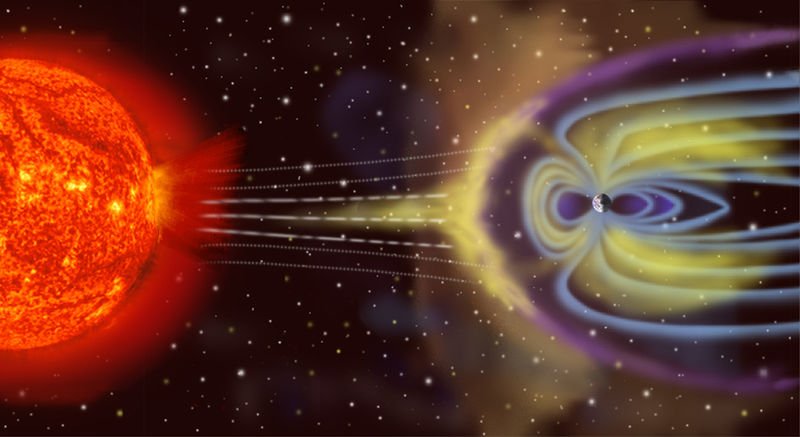Welcome once again on a new episode of the Bizarre Natural Phenomena series! This post is about famous Aurora Borealis, the Northern Lights, the Polar Lights, Aurora Lights (I think you got the topic, so I'll put an end here).
On cold winter nights in high latitudes (around the poles) you can become witness of a spectacular light show. Imagine a painter using his brush to color the sky in shades of neon lights, blue, green, purple, yellow... Can you transfer yourself in the moment? Can you smell the cold air coming into your nostrils and the chill getting through your jacket and make your back shiver? Well, try to ignore the cold, turn your eyes upon the sky and enjoy this amazing view!

(Image source: commons.wikimedia.org)
What is it?
This miraculous spectacle is another example of destructive beauty within our universe (amazing how violence can be so pretty at times). The phenomenon is the result of the collision between solar wind and atmospheric particles, in short it's solar wind hitting on the atmosphere.
Why does this happen?
The secret lies in the earth's magnetic field. Just like a magnet, our planet has a magnetosphere surrounding and shielding it against the rip-out of our atmosphere from solar wind. Imagine the lines of the magnetic field extending from the north and reaching the south pole like loops. Solar wind is basically violent gusts of plasma (highly excited, ionized particles). When solar activity is intense, the plasma particles crash onto the atmosphere particles with extremely high velocities. Our magnetosphere-shield protects us against the sun's "bullying"; but at the poles of the magnetic field, where it's at its weakest, solar wind manages to penetrate the atmosphere.

(Image source: commons.wikimedia.org)
Friction among the plasma and atmosphere particles is inevitable. As the super-excited plasma electrons collide with the oxygen and nitrogen molecules, they excite them as well, only this does not last for too long. As the nitrogen and oxygen particles return to their stable state, they release an amount of energy (that they got during the collision) in the form of light energy, a photon. The color of the photon depends on the element plasma interacts with and the distance from the ground (generally, we can see the phenomenon from 80-640 kilometers high in the atmosphere). The structure of the particle also plays a role in the color, atomic nitrogen results in blue light, whereas molecular in purple.
Are we the only ones to see it?
The phenomenon can be viewed around the poles, the equivalent of Aurora Borealis being Aurora Austrealis for the south hemisphere. Extending in a radius of 3,000 kilometers around the poles, the annulus is the zone where the phenomenon happens. The arctic circle is the best place where you can see it if you're in the northern hemisphere, whereas it's harder to view it in the south because it mainly hovers above Antarctica. Note that the polar lights are present during daytime too, but owing to the sunlight we cannot see them (it's exciting to know that photons are hiding behind sunlight, isn't it?).

(Image source: commons.wikimedia.org)
Although we like to think of the earth as a place with unique privileges, the northern lights are not included in the list. The phenomenon can occur on other planets with a magnetic field, Venus, Mars, Jupiter and Saturn being some of them.
I wanna hear it once again:
References
wikipedia.org
northernlightscentre.ca
space.com_1
space.com_2
space.com_3

Thank you for stopping by and giving this post a read. I hope you enjoyed it! If it got your curiosity-radar on, you can check some of the previous articles on this series:
23 - Explosive Lake Nyos
24 - Ball Lightning
25 - Moeraki Boulders
26 - Psychedelic Swamp
27 - Supercell Storms
If you please, feel free to pay a visit to my blog and check out my short stories along with plenty of educational posts and of course lots of doses of troll-teaching!


Until my next post,
Steem on and keep smiling, people!


